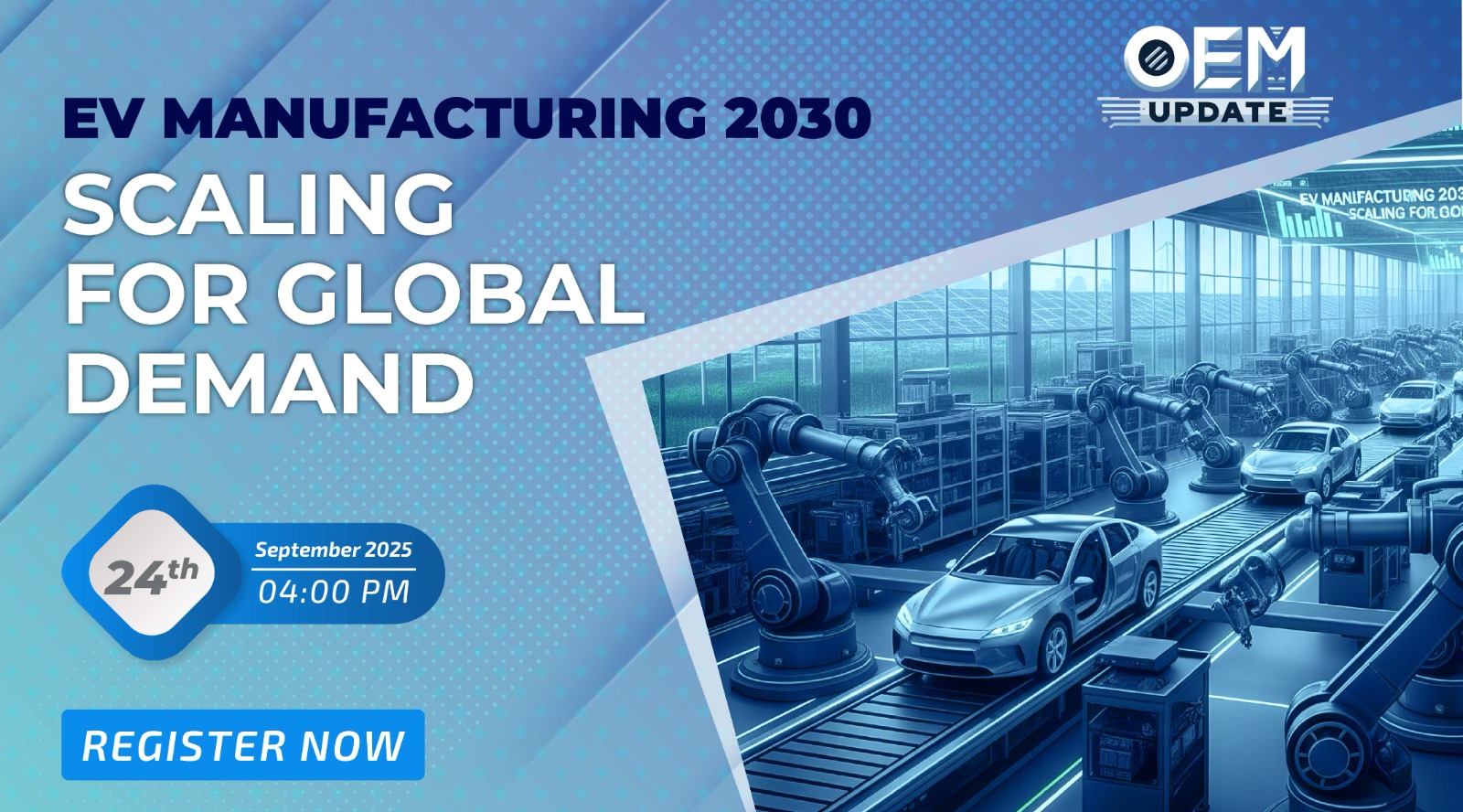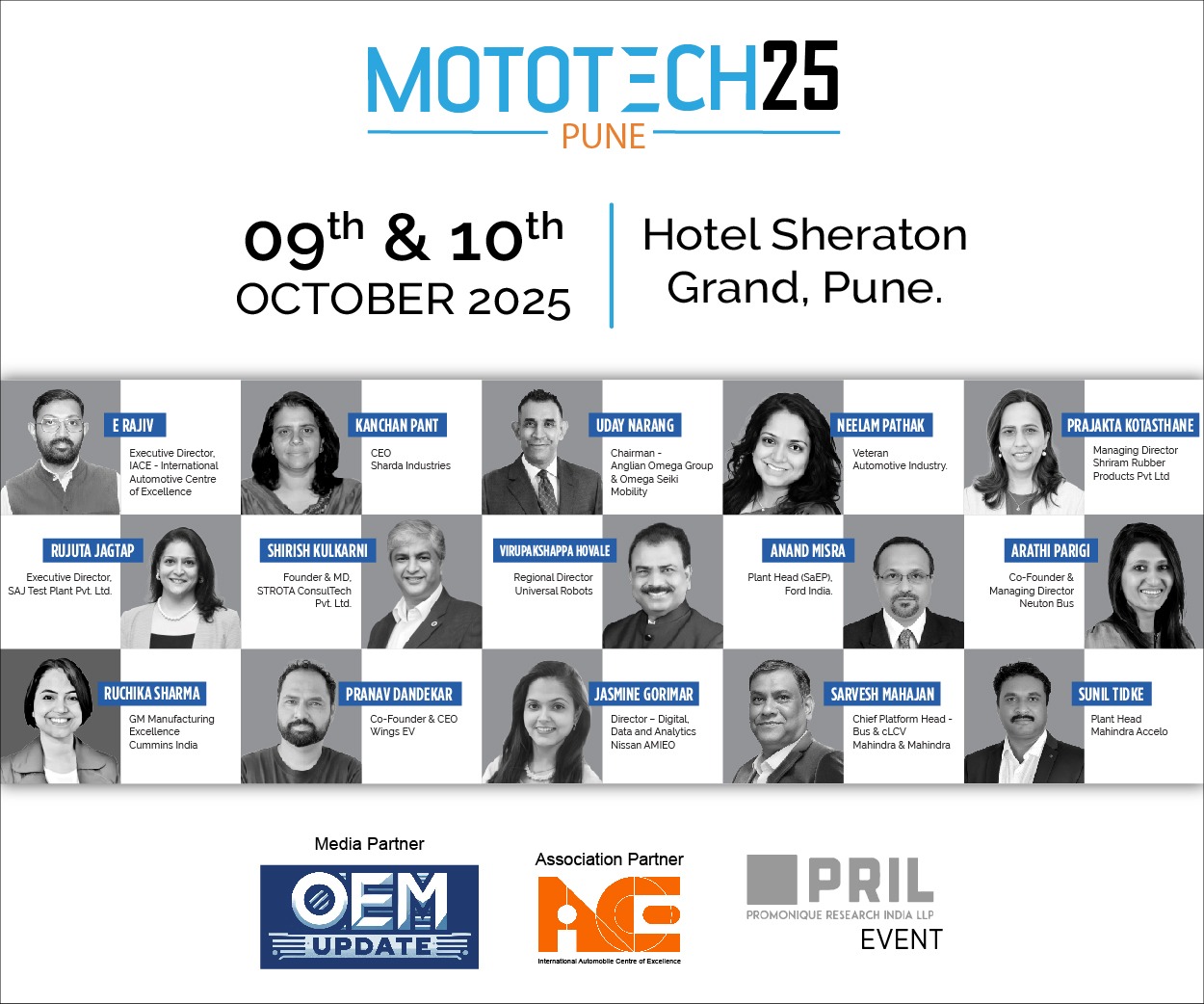Modicon: For a cyber-secured manufacturing phase
By OEM Update Editorial February 9, 2019 12:16 pm IST
Schneider Electric is celebrating the completion of 50 years of Modicon. In an interaction with Aultrin Vijay of OEM Update, Meenu Singhal, Vice President, Industry Business, Schneider Electric India, talks about how while playing a major role in cyber security, Modicon collects, connects, analyses and enables companies to act on real time data to improve efficiency.
Cyber security and AI
Artificial intelligence is the core of automation. Modicon connects the connected components to the apps and applications, which are connected to the cloud. This cloud is where cyber security aspect comes in. Modicon is the only PLC in the world, which has cyber security built-in. We have an industry-level cyber security layer built into our systems.
Adoption of technology and automation
Modicon is the basic flagship where automation started in the manufacturing space. The adoption of IoT and Industry 4.0 in manufacturing have started happening since last few years. Right now, SMEs are largely adopting automation, which is helping them to improve their efficiencies. However, adoption of automation is very low with small players compared to the mid-sized (`500- `1,000 crore) industries.
With automation we could potentially reduce the cost of production, optimise the processes, and improve efficiency by up to 20 per cent. As manufacturing sectors have started understanding it, they have started showing interest in it.
Most of the multinational companies in India require their products to be globally compliant in terms of all regulators’ requirement. So, Modicon gives them this flexibility. The adaptation has been much faster in last few years and the rate at which it is going on will be multiple times than what it is today.
Maintaining the quality of products
The message that I want to share to manufacturers is start from where you are in adopting Industry 4.0. This means manufacturers need not replace their entire system. Instead, they can implement Modicon with their existing systems. This can improve efficiency of the plant, improve the reliability and quality of the product, and reduce defects with sustainable and scalable architecture. It is interoperable. So, it can work with any of the products which is not Schneider oriented.
We are expecting the industrial automation manufacturing market will be around $3.5 billion in India by 2020. This is also going to generate good amount of jobs. According to the data we’ve collected from our studies, we are expecting around 90 million jobs to be generated in manufacturing industry alone because of this revolution and investment.
We primarily see maximum growth, in terms of adopting automation, in industries which are into utilities, manufacturing space, transportation, automotive, and the supply chain. These are the areas where we see lot of investment and attraction of IoT and Industry 4.0 coming in.
Govt initiatives to boost digitisation
We have automated one of our 24 factories in India — our flagship factory in Hyderabad — which is equipped with all levels of connected products, edge controls, apps and applications. We are also contributing to ‘Make in India’ campaign. We are getting the awareness done regarding Industry 4.0 to all our customers through various domestic and government players. The government is also doing a lot about adaptation of digital technology, digital transformation, smart technology, smart cities, smart water, etc. These are the initiatives that the government has taken now. They are themselves driving the need for automation.
Need for more investments
There is a need for investment in R&Ds and innovations. I firmly believe that we should continuously invest in R&Ds in ensuring that our efficiencies improve further, number of moving devices reduce further, the speed of processing become faster, and the physical start getting converted into digital.
Artificial Intelligence (AI) is the core of Big Data and Analytics. We are looking at AI, fuelling the growth of processes automation in industries very effectively and efficiently.
Additive Manufacturing (AM) is something which is built up. So we do see a future of that coming in. We are not clear about how much time, but it is clearly taking on very effectively.
Augmented Reality (AR) has already come in, especially for remote monitoring and remote services. So that is also going to grow very fast. I would say AR will be equally as fast as AI in terms of growth. Schneider, with Modicon, has already launched products on AR platform and industries are adopting it.
Operational efficiency and profitability
When we look at IoT and automation combined, the speed to market has improved. The processes have become five times faster than the old processors and they can actually reduce the time to market by 25 per cent. For a large company, it means they can save around $1.2-1.3 million in annual return.
Due to the cyber security layers built into the processors, the amount of money saved by the end customers is also around $1.2-1.3 million per annum.
Also, with increase in efficiency and reduction in cost of energy consumed for the process, around 20 per cent optimisation has been possible in today’s industry with the advent of IoT. It is possible by optimising the existing resources we are using, making them more productive by not adding more resources.
This 20 per cent yields roughly $20 million in savings for a large organisation. If you combine these things together, it’s a huge amount of saving what these industries get. Earlier, to localise a fault, it used to take over two hours to two days. Today, it takes only seconds to identify a fault. So, these benefits are tangible and intangible, but give a lot of benefits to the end customers.
One of the perceptions of people is that connecting products and connecting systems take lot of money. The fact is they can do it with very little capital, which they want to. Even if it’s an older plant it doesn’t take a lot to connect the few basic parameters, which can yield them the efficiency improvement which are beyond what they can expect.
Secondly, one of the biggest myths that people have is that if it’s a Schneider PLC it will only be compatible with Schneider products. This is not the fact. These are interoperable and can communicate even with products, which are not a part of that.
Securing IoT from ‘Internet of Threats’
Modicon is the only PLC in the world, which has industry standard cyber security layer built-in within the processor. So with this protection, we protect our customers from cyber threats.
We are expecting the industrial automation manufacturing market will be around $3.5 billion in India by 2020.
Meenu Singhal, Vice President, Industry Business, Schneider Electric India
Cookie Consent
We use cookies to personalize your experience. By continuing to visit this website you agree to our Terms & Conditions, Privacy Policy and Cookie Policy.
















